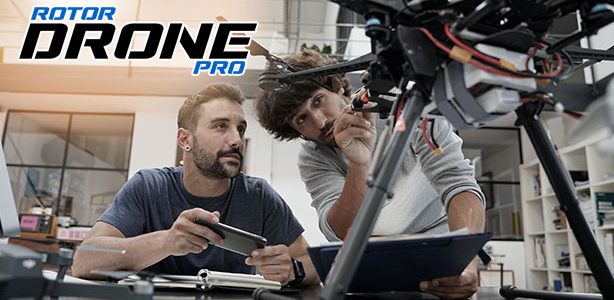While it clearly isn’t an aerial drone, the Hydrus from Australian-based Advanced Navigation deserves plenty of respect for behaving just like one—only underwater. Indeed, the most eye-catching aspect of the company’s booth at AUVSI Xponential 2022 was a clear cylinder full of water, with the Hydrus hovering effortlessly inside, nearly identical to a drone with GPS position hold engaged.
What makes this so impressive is that radio signals, especially the relatively weak signals broadcast by GPS satellites, do not propagate through water—making the underwater realm the ultimate GPS-denied environment. To find out exactly how this was even possible, I spoke with Pete Baker, the company’s subsea product manager.
“What we’re trying to do is take the aerial drone revolution underwater,” he said. “If you look at where drones were 10 to 15 years ago, they were the kinds of tools that you needed highly trained staff in order to operate. They had a lot of maintenance, a lot of complexity and a high cost associated with them.
“But now the drone market has completely changed in the aerial space. Drones are really easy to use and anybody can have one. That step-change hasn’t really happened in the underwater space — until now, we like to think.”
To achieve the stone-steady position hold that is the signature of modern drones with GPS-enabled flight control systems, the company developed an acoustic positioning system called Subsonus. At the surface, the mothership sends out an audible signal, like a sonar “ping,” which the drone detects and transmits back to its source. By combining the information derived from this process with the surface vessel’s own GPS fix, it is possible to essentially establish the drone’s absolute position underwater.
Owing to this breakthrough, the Hydrus is able to complete waypoint-driven missions in a manner nearly identical to an aerial drone—and opens up the same sorts of possibilities: mapping and surveying, photogrammetry, and autonomous inspection of underwater assets. To facilitate this type of data acquisition, the Hydrus has a downward-facing camera capable of capturing still images as well as 4K video at 60 frames per second. It does double duty as an optical flow camera, providing the platform with another means to maintain its position above the ocean floor.
“We also have four two-megahertz acoustic transducers,” Baker said. “We use those to bounce sound off the seabed and look at the echo coming back to each sensor. By measuring the Doppler shift on each of those signals, we’re able to determine the vector of movement for the vehicle.”
Data from the Subsonus system, the camera and the transducers are all fed into the platform’s control unit, which uses them in a manner similar to how the flight control system on a drone takes input from its various sensors to help the pilot safely fly the aircraft. Of course, given the low bandwidth of underwater communications, the Hydrus is only capable of operating autonomously.
“This system works for up to three hours underwater,” explained Baker. “The beauty of working underwater is that we’re not fighting gravity. We’re neutrally buoyant, so we only use power when we’re actually moving the vehicle—so it’s pretty good on the batteries.”
To compensate for the lack of sunlight in the depths, the Hydrus incorporates a bank of LED lights. However, the general turbidity of the underwater environment and tiny, floating particles can create backscatter, such that adding more light may actually result in reduced visibility. To meet this challenge, the system includes a machine-learning algorithm that continually adjusts the output of the LEDs to provide maximum clarity in the image.
While drones use propellers to maneuver through the air, the Hydrus uses small, hubless thrusters to change its position and attitude.
“Another challenge you can encounter underwater is that you can get a lot of seaweed or fishing line, which can get tangled around a central hub, so our system incorporates some quite novel technology to prevent that from happening, as well as making them quick and easy to replace, if necessary,” Baker said.
TEXT & PHOTO BY PATRICK SHERMAN



















